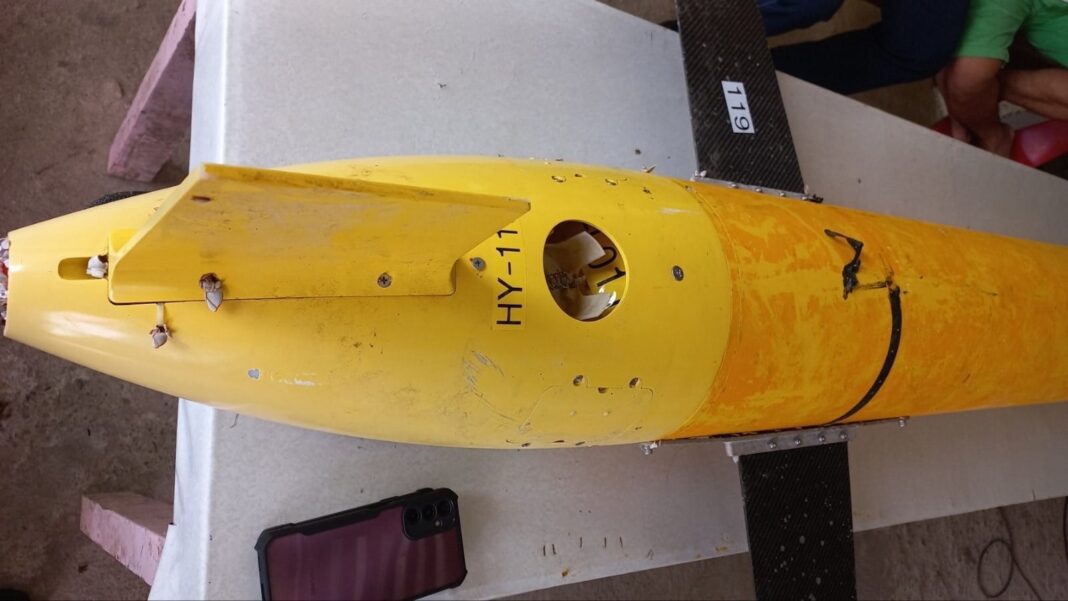In a concerning revelation, the Philippine military recently announced that five underwater drones, discovered between 2022 and 2024, could have been used for intelligence-gathering and “underwater warfare.”
Discovery of Underwater Drones
These drones were found in strategic locations that are important for the country’s defense and international maritime navigation. Concerns over potential espionage operations and the escalating South China Sea tensions are raised by their discovery.
The underwater drones were recovered from areas considered crucial for the security of both the Philippines and global shipping routes. These regions are also significant for military operations, which makes the presence of such underwater drones particularly concerning.
The military officials stated that the information gathered by these drones was not just for navigation purposes but could also be used to test weapons and detect underwater threats.
Undersea Cable Mystery Deepens Tensions; China Warns Retaliation Against Lithuania
A SIM card discovered in one of the drones was among the most concerning findings. According to Rear Admiral Roy Vincent Trinidad, a spokesperson for the Philippine Navy, the last signal from the SIM card was traced back to mainland China.
This revelation adds to the suspicions that the drones may have been deployed by China, possibly for surveillance activities. However, the Chinese Embassy has yet to provide any official response to these claims.
Location and Features of the Drones
The underwater drones were discovered in various locations around the Philippines, including critical maritime chokepoints. Three of them were found near the northern coast of Luzon, particularly close to the Balintang Channel, an area south of Taiwan.
The other two drones were situated close to Mindanao in the south and Masbate Island in the center of the Philippines. These regions are vital for both Philippine defense and international shipping.
Taiwan Investigates Undersea Cable Damage Linked to Chinese Ship
According to Rear Admiral Trinidad, the drones were outfitted with Chinese-made parts and had Chinese markings. He pointed out that the presence of a SIM card with a China telecommunications number was a significant piece of evidence linking the drones to China. Some drones had markings that appeared to be intentionally defaced, likely to prevent reverse engineering or to hide the true origin of the equipment.
The technology found in the drones included CTD sensors (conductivity, temperature, and depth sensors). These sensors have military uses in addition to commercial and scientific research uses. The dual-use nature of the technology makes the drones particularly concerning, as they could help map underwater terrain and detect naval threats, enhancing the capabilities of any military forces operating in the region.
Security Concerns and Response
The discovery of these underwater drones has raised significant concerns among the National Maritime Council (NMC) and the National Security Council (NSC). Concerns regarding the reason behind the discovery of these drones in Philippine waters and the possible ramifications for the nation’s security were voiced by the NMC.
Terrifying Underwater Discovery of Drone Sparks Alarming Security Concerns in the South China Sea
NMC spokesperson Alexander Lopez highlighted that such drones could be used for both military and non-military purposes, possibly for intelligence gathering. He questioned why these devices were present in Philippine waters, especially given the ongoing territorial disputes with China in the South China Sea.
Jonathan Malaya, assistant director general of the NSC, called the incident “alarming” and a clear indication of the extent of foreign operations within the Philippines. Malaya pointed out that the country had already arrested several Chinese agents suspected of engaging in espionage, and now the discovery of these underwater drones adds another layer of concern about foreign intelligence operations in the region.
In response to the growing security threats, including the recent recovery of underwater drones in sensitive areas, the Philippines is preparing for joint military exercises with the United States, known as Balikatan, which will take place from April 21 to May 9. The exercises will include a new focus on integrated air missile defense, marking a shift in the country’s military strategy as it strengthens its defense capabilities amid rising tensions in the region. The exercises will involve around 10,000 soldiers from both countries and will be conducted in various locations, including northern Luzon, which is considered strategically important for defense operations.
The Philippine military’s discovery of these underwater drones has brought attention to the increasing technological sophistication of intelligence-gathering efforts in the South China Sea. It also raises questions about the extent to which foreign countries are operating within the Philippines’ maritime territory. As the situation develops, it remains a critical issue for national security and regional stability.

